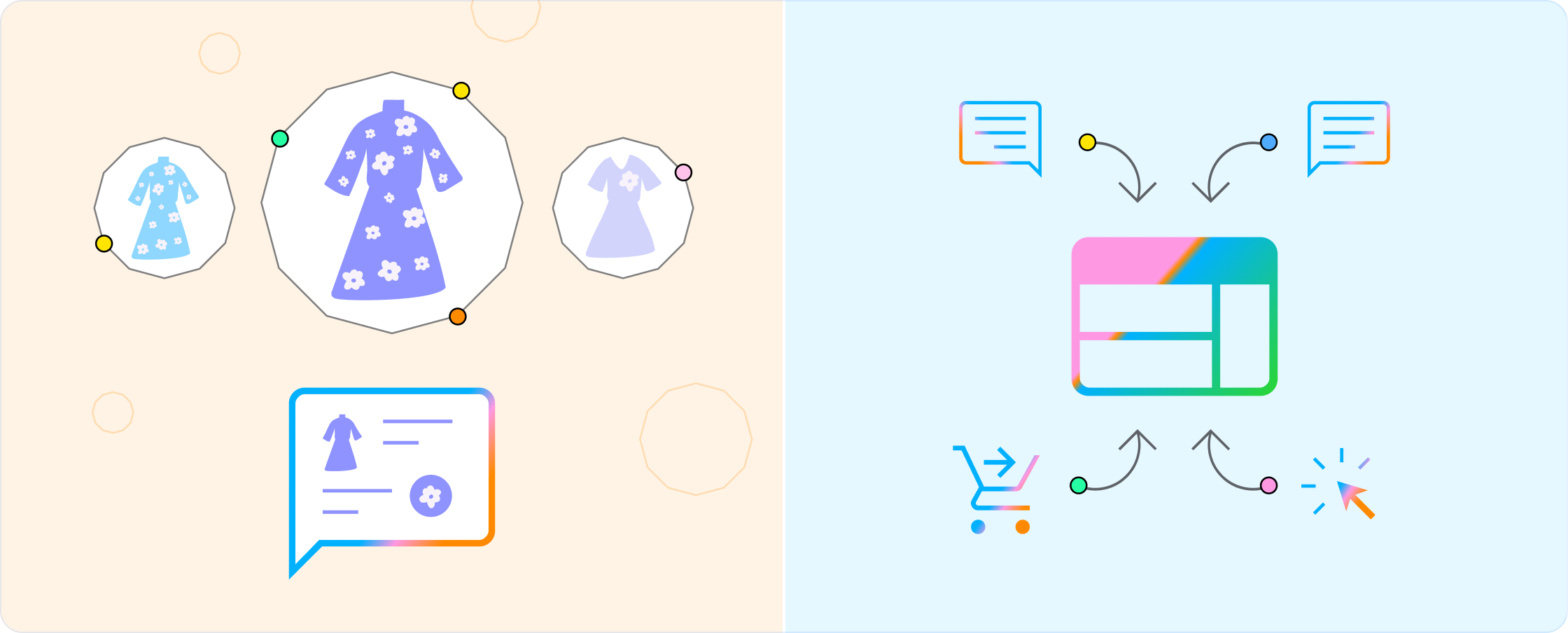Unlocking Higher E-Commerce Conversion Rates with AI in 2024
As a marketing or e-commerce leader, you are constantly focused on improving online shopper experiences and boosting the ROI of your marketing efforts by increasing conversion rates and customer retention. State-of-the-art AI, including generative AI models, presents a significant opportunity to bring about a transformative improvement in customer interactions. Following the surge in mobile web and app innovations, the pace of innovation in e-commerce felt like it hit a plateau in the last few years. Now, AI offers a fresh opportunity to dramatically transform e-commerce.
However, the excitement surrounding AI can be overwhelming, cluttered with hype and lofty predictions. It's challenging to differentiate practical, immediate applications for generating impact today from futuristic ideas. Understanding this distinction is crucial for leveraging AI to make a tangible impact now.
Here are four strategies in which you can start deploying AI on your website and make a substantial impact to your conversion rates today:

1. Enhance Your Search Functionality with AI-Powered Semantic Search
An immediate step you could take is upgrade your existing e-commerce search to a solution that includes semantic search. AI-powered semantic search can understand the intent and contextual meaning behind a user’s query, rather than just matching keywords, allowing for more accurate and relevant results.
For example, if a user is searching for “space saving furniture”, the semantic search engine will understand, using natural language processing, that the user is looking for furniture items that are suitable for small spaces or multi-functional environments. Instead of simply showing products with the tag "space saving," the semantic search engine would showcase a variety of multi-functional furniture such as sofa beds that convert into beds, compact dining sets that can be folded away when not in use, or ottomans with storage inside. By understanding the broader context of "space-saving" as not just a feature but a necessity for maximizing limited living areas, the semantic search engine can provide a highly relevant and useful set of product recommendations tailored to the specific needs of users looking to optimize their living spaces.
2. Implement 24/7 AI Conversational Assistance for Sales
Imagine you have a physical store and a shopper is interacting with your best salesperson who has a deep knowledge of your brand and the products you sell. This is a delightful assisted shopping experience for your customer and it increases their purchase confidence significantly. With AI, you can now recreate this experience in your e-commerce store with an AI sales agent and make it available to all your customers 24/7.
Customers can ask nuanced questions and get answers instantly instead of having to do their own research or navigate through multiple pages. It can reduce the need for human customer service intervention and decrease page abandonment rates. You can train this AI sales agent with your data so that it is a true reflection of your brand including the tone of voice. And the best part is that the performance of these AI sales agents improves over time as they learn what works and what doesn’t with consumers.

3. Deploy Visual Style-based AI Recommendations
One of the key capabilities unlocked by AI is its ability to analyze your product images, extract the aesthetic visual attributes, and describe them in the language that your customers are likely to describe your product. You can use this capability in a couple of ways. First, when a user is viewing a product, you can automatically suggest other visually similar products as product recommendations. These recommendations will be of higher quality compared to what was feasible before AI. Second, you can use this to retrieve relevant products when users are searching based on visual cues. For example, if a user is looking for a “blue floral pattern summer dress”, your semantic search will be able to retrieve the right products even if the title or description don’t explicitly mention “floral pattern”.
4. Optimize Website & Marketing Content based on Consumer Insights
As you implement the features described above, your customers are going to be having natural language conversations with your brand. The insights from these queries and conversations are going to be far greater than anything you would have learned previously from your customers. Based on a deep understanding of the top questions from your customers and which of them lead to conversions vs. abandonment, you can update your product descriptions to reflect the language of the customer. You can tweak your email and ad creatives to speak the language that resonates with your customers. This is a continuous process that can fine-tune your content as you derive more insights from the natural language conversations.
Choosing the Ideal AI Solution Provider for Your E-Commerce Needs
Whether you build these products in-house or choose a third-party solution, it is really important that the solution includes continuously optimizing the experience for your business success i.e., increasing conversion rates in our scenario. Merely implementing an AI sales agent or semantic search is insufficient. Your solution provider must ensure that these features are supported by robust machine learning models designed to increase conversion rates. Such models leverage historical data insights to consistently refine and personalize the customer experience, ensuring ongoing improvement and alignment with your conversion rate goals.

